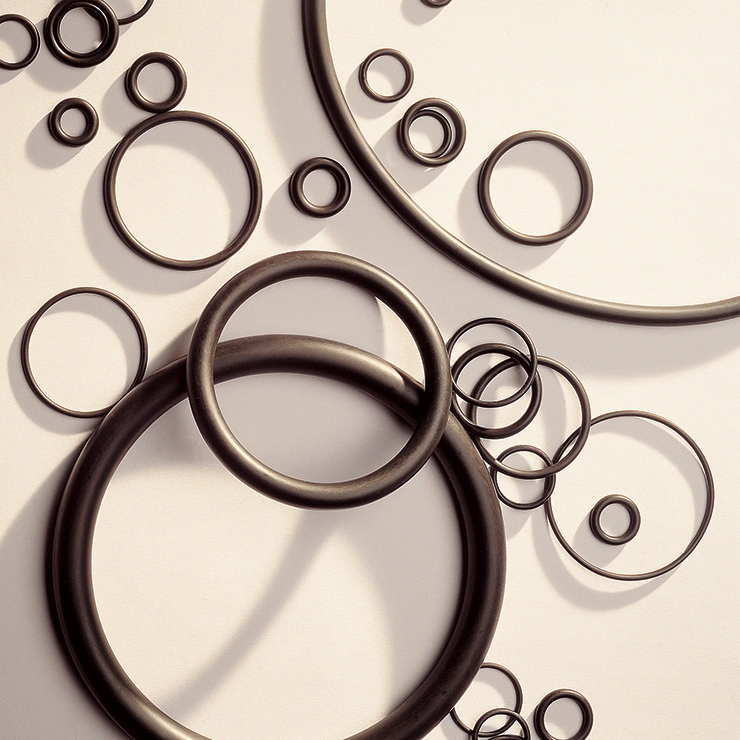Considerations on the use of O-Rings
O-Rings are toroidal section rings made of elastomeric material to which other substances, defined 'loads' are added, with the aim of conferring special chemical- physical properties to the final compound (figure 3.1). O-Rings are principally used to construct a seal element for joint components in hydraulic and pneumatic equipment, impeding or limiting fluid loss.Therefore, O-Rings are used in an enormous range of sectors thanks to their ease of use and low cost.
 Figure 3.1
Figure 3.1Cross section diameter and section diameter
The sealing action takes place thanks to the closing of escape paths by the O-Ring. The O-Ring is compressed and deformed inside a seat realised for this purpose; its elastic properties allow it to exert pressure on the walls of the system components, and it is this action which causes the sealing effect. The presence of pressure exerted by the fluid can contribute towards increasing the seal (figure 3.2).
 Figure 3.2
Figure 3.2a) O-Ring at rest - b) O-Ring in sealing position
The availability of various compounds allows the realisation of O-Rings that are capable of working in contact with the most diverse types of fluid, at high and low temperatures and in static and dynamic applications, as will be described in the next paragraph.
